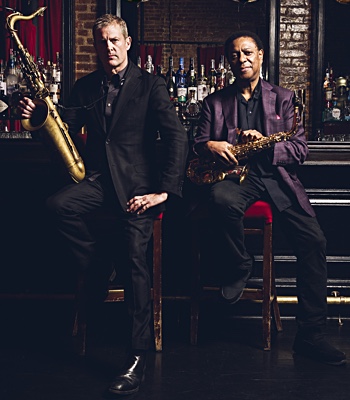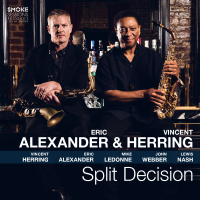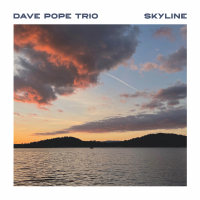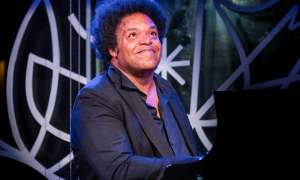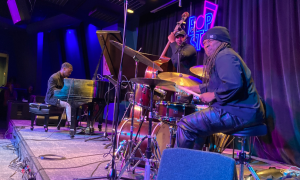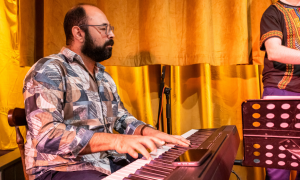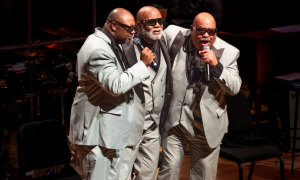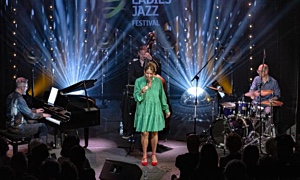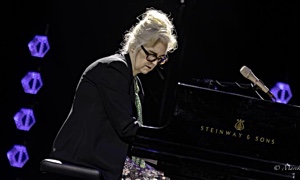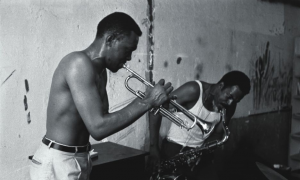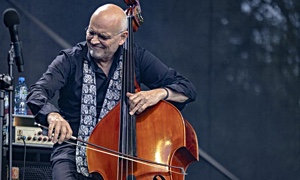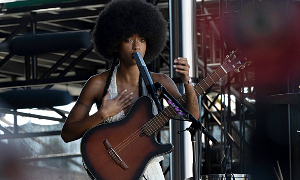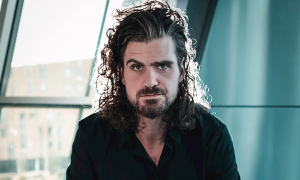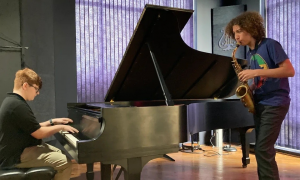Home » Jazz Articles » Live Review » JazzNorway in a Nutshell 2014
JazzNorway in a Nutshell 2014
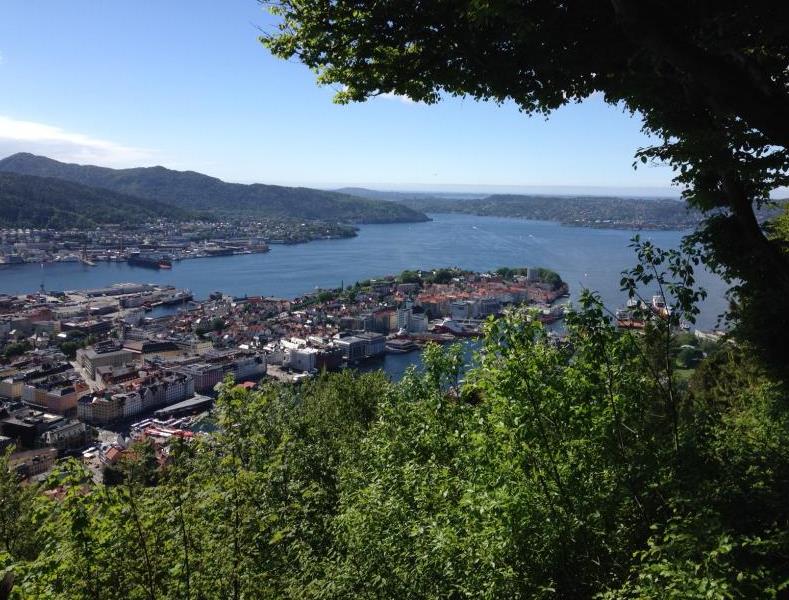
Bergen, Norway
May 21-25, 2014
Bergen, the second largest city of Norway along the northwestern coast of the North Sea, is situated along an impressive mountainous bay. Protected against and open to the sea, to the world it is an illustrious place of a centuries-old merchant tradition, originating from the times of the Hanseatic League which connected important places along the Baltic and North Seas. Trade, fish, important natural resources, industry, education and culture: Bergen, the place of Norwegian composer Edvard Grieg and star-violinist Ole Bull; Bergen, a major urban cultural centre in the north of Europe. Just a few indicative keywords for the place of the annual JazzNorway in a Nutshell event, which coincides with the city's Nattjazz festival.
Nutshell and Nattjazz
Nutshell 2014, connected to this year's 42nd edition of Bergen's Nattjazz (nightjazz) jazz festival, was organized by the West Norway Jazz Center in cooperation with The Ministry of Foreign Affairs, the City of Bergen, the County of Hordaland, the Norwegian Jazz Forum and the Bergen International Festival. It offered opportunities to experience music by a selection of Norwegian musicians at various culturally marked places in and around the city of Bergen: a brand new house of literature; an old fish factory; an old rural furniture workshop; a regional art house; an illustrious old music room; and a restaurant room on top of the highest of the mountains that surrounds the city.
The music and the musicians on location required access by boat, bus, funicular and some walking/climbing, thereby experiencing some of the impressive landscape around Bergen including the area of the Hard©ónger fjord. Landscapes, big and impressive and nowadays totally wired with electrical lines are (inter)connected by roads, trains, lots of tunnels and bridges as well as high speed boats which allow comfortable crossing through and along places that create striking contrasts. And the snow and glaciers that can be seen on satellite pictures? They are real—a permanent accompaniment when traveling through Norway.
When traveling, meeting and talking, food and meals were another accompaniment organized carefully by JNiaN's hosts: as much as possible, local food; local vegetables, grains, fish and meat, cheese and butter; lamb, whale, winter-codfish, barley and brunost/gjetost.
Nattjazz was a ten-day event that took place at four venues at the old United Sardines Factory of Bergen, now a busy art production center. Jon Skjerdal's programming had a 50:50 proportion of domestic and international musicians and groups. Among the domestic musicians and groups there was also a firm representation of Bergen residents. Additionally, Nattjazz strove to program new configurations of musicians and groups/musicians who have not performed at the festival before. Most, but not all, of the musicians/groups who participated in Nutshell were also involved in this year's Nattjazz program. Presenting between six and eight overlapping concerts every night, complete coverage of the four days spent at the festival was impossible.
There was, however, one remarkable concert at Nattjazz which will be addressed first, preceding a report of all the other events. That was the performance of Norwegian bassist
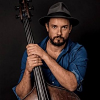
Steinar Raknes
bass
Tom Waits
piano and vocalsb.1949

Paolo Vinaccia
drums1954 - 2019
Bergen House of Literature
Nutshell started at Bergen's brand new House of Literature, a new cultural centre which was revealed to be successful beyond expectation right from the beginning, a year ago. It was a place not only for poetry and literature but for cultural, social and political debate and the arts connected to it. Starting there set the tone in a clear way for JNiaN 2014, which presented two groups the first night, Cortex and Bushman's Revenge.
Cortex is a strong up-and-coming quartet configuration instigated by cornetist Thomas Johansson, with saxophonist
Kristoffer Berre Alberts
saxophoneOla Høyer
bass, acoustic
Gard Nilssen
drumsb.1983

Ornette Coleman
saxophone, alto1930 - 2015

Albert Ayler
saxophone, tenor1936 - 1970
Bushman's Revenge, a particularly scorching South African hot sauce, was also the apt name of the free-rock power trio of guitarist Even Helte Hermansen, bassist Rune Nergaard and drummer Gard Nilssen. With six albums out on Rune Grammofon—the most recent being Thou Shalt Boogie!, released at the end of 2013—Bushman's Revenge now belongs to Norway's collective of established groups. Its music was basically a raging electric guitar storm with compelling drums and an occasionally heavy Hammond hammering and curving. The storm sometimes quieted down for awhile, providing space for different temperaments, temperatures and tempo—slower, and even introspective. The rock-driven music was jazz-spirited in the sense that the musicians felt free to produce their own sheets of sound and go to other places and fields easily, distilling their own liquor throughout. At the House of Literature it was revealed that the trio could induce a full blown high energy level of storm in less than fifteen minutes and hold that easily. Together with the vital sounds of Cortex it provided a steamy start to JazzNorway in a Nutshell 2014.
Nilssen was involved in Nattjazz later that week with his new duo sPacemoNkey, with

In The Country
band / ensemble / orchestra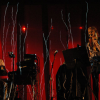
Morten Qvenild
pianoOle Bull's Lys?en
The second day brought us to an illustrious place of importance for Norwegian self-understanding and/by music. Lys?en (pronounced leeseuan) is a small island outside Bergen where Ole Bull (pronounced oule beul) built a fantastic fantasy residence. The residence is an amazing amalgam of eastern and western elements, Moorish with art deco. Its moderate size and its fabrication from wood and glass were strong unifying factors.
Ole Bull, this crazy Norwegian fiddler, was born in Bergen in 1810 into an era of virtuosos all around in Europe: Paganini, Gusikow, Spohr, Schumann, Liszt, Joachim, just to name a few. Bull caused a furor on stages in Europe, Canada, the United States and Cuba. Through his concert tours in the U.S. he amassed a considerable fortune. His fame rested on a few catching features which impressed his large public even as it did his peers, like his flaming improvisations, the spontaneous flow of his music and the way he could switch back and forth between different musical spheres. "He is simply extraordinary. He is a kind of wild genius with an abundance of original, compelling ideas. In short, he hit me and it's a long time since it happened to me so," as Franz Liszt put in 1860. Star violinist and conductor Joseph Joachim mainly fell for Bull's interweaving of Norwegian folk melodies in his playing. There were not only the special folk melodies but also the violin's sister instrument, the Hard©ónger Fiddle—with its sympathetic strings and a flatter, lower bridge, allowing more strings to be played simultaneously—both of which Bull grew up with. For his concert violin he used a flatter bridge and preferred an extra long bow.
Bull was not only a world famous musical star. His originality, self-consciousness, courage and clear identification with his indigenous culture and connectedness with his own people had a great impact on building and maintaining a Norwegian identity. He constantly encouraged his fellow Norwegians to be themselves, to carry out their originality and retain their own culture, an ethic which continues to this day, with violinist Nils ?kland and pianist/harmonium player Sigbj?rn Apeland recording Lys?en: Homage ©ó Bull (ECM, 2011) at Bull's home.
Four musicians had the honor of performing in the bigger music room in the centre of the house. First, young classical violin player Guro Kleven Hagen, who has just released an amazing rendition of Violin Concerto no. 1, by Max Bruch, and Prokofiev's second Violin concerto, together with the Oslo Philharmonic Orchestra. She performed on one of Frits Kreisler's violins, rendering two short pieces with her finely grained, multifaceted sound: one by Bach and one by Bull.
Then came pianist Eivind Augstad's trio. Augstad and double bassist Magne Thormods?ter, both from Bergen, were joined by Trondheim-based drummer H?kon Mj?set Johansen to form a quite decisive unit which moved with taste and clarity along the more interesting corners of trioism. Augstad and Thormods?ter are both staff members of Bergen's Grieg Academy and form Living Space, an all-Bergen group together with Bergen born saxophone-colossus Kjetil M?ster and older generation drummer Frank Jacobsen, a central figure of the Bergen scene, in particular as a member of the Bergen Big Band that recorded Crime Scene (ECM, 2010) with guitarist

Terje Rypdal
guitarb.1947
Drummer Johansen also performed in two other groups at Nattjazz: together with Thormods?ter on double bass in Trondheim pianist Svein Olaf Herstad's trio; and also in renowned guitarist Havard Stub?'s quartet with Swedish bassist

Torbjorn Zetterberg
bass, acoustic
Arild Andersen
bass, acousticb.1945
Hanne On Top Of the Hill (Hanne pa Hoyden)
Late afternoon brought us to another hilltop in town, to a meal offered by the Ministry of Foreign Affairs at Hanne pa Hoyden, a quite new restaurant serving indigenous food from Bergen and its surrounding area, taken from local/regional farmers. It was the place for the second showcase of the day: the young quartet, Cirrus.
Stavanger-based Cirrus was a young group with a highly original approach that tastefully brought together jazz vocals, French chanson (waltzing) and strong traces of Indian music. Singer
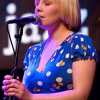
Eva Bjerga Haugen
vocals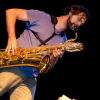
Inge Weatherhead Breistein
saxophone, tenor
Stein Inge Braekhus
drumsb.1967
The first Nattjazz night presented two parallel opening concerts:

Hakon Kornstad
saxophoneb.1977

Rob Mazurek
trumpetb.1965

Claude Thornhill
vocals1909 - 1965

Enrico Rava
trumpetb.1939

Miles Davis
trumpet1926 - 1991

Paul Motian
drums1931 - 2011

Han Bennink
drumsb.1942

Uri Caine
pianob.1956

Sidney Bechet
saxophone, soprano1897 - 1959
Kornstad has indeed integrated both in a really surprising, convincing and highly enjoyable way within one unified program. What made it work; how did he make it work? In the first place, because of the excellent sense of orchestration and dynamics that he was able to achieve with an even more excellent lineup consisting of organist/harmonium player
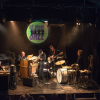
Sigbjorn Apeland
keyboards
Per Zanussi
bass, acousticb.1977
Oyvind Skarbo
drumsb.1982
Despite dynamic differences and contrasts they held the performance together as a whole on one and the same imaginary level. All the musicians took it to a third place, keeping the essentials intact. Kornstad did not go for big, bombastic tenor singing, but instead for musically sensible and subtle singing in the popular tradition of bel canto, thereby never overwhelming the group's other voices. On the contrary, his singing gave the music emotional depth and touching qualities as a whole, so that his performance culminated into the apogee of the first night of Nattjazz 2014. It was not only an extraordinary example of using these specific elements but an example of leaving behind reproduction and fixation, and gaining access to the inner richness of other worlds applicable to other musical genres and projects from which to absorb and draw. It was not just a question of adding, combining or so-called mixing. Behind it there lay a specific approach to deal with known music, known routine frames of performance and listening as a musician like Uri Caine or Ennio Morricone might have explored and/or done before. But apart from these backgrounds, the surprise and fascination in the audience was truly sensible which no doubt had to do with Kornstad's clear sense of well-dosed drama.
?ystese, Hard©ónger: Art House Kabuso and Storeteigen
On Friday, May 23, a bus ride to and along the Hard©ónger Fjord (stress on second syllable), south of Bergen, to ?ystese, was accompanied by Brit Aksnes from the Nutshell organization, a woman originating from the area. She provided a series of lively stories about life as a child and adolescence in the Hard©ónger area, stories which made more of a ride along an already picturesque route.
The theatre of the Art House of Kabuso—impressive for this relatively small settlement in the Hard©ónger area—was the place for a show-case by Ballrogg. Originally a duo featuring reed multi-instrumentalist Klaus Ellerhusen Holm and double bassist
Roger Arntzen
bass, acoustic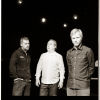
Ivar Grydeland
guitar, electric
Huntsville
band / ensemble / orchestra
Trondheim Jazz Orchestra
band / ensemble / orchestrab.2000

Eric Dolphy
woodwinds1928 - 1964

Ornette Coleman
saxophone, alto1930 - 2015
It was a smaller-scale version of Norwegian ambient music that still demonstrated traits of contemporary composed music in its structure and dynamics, next to strange and beautiful music around—to apply an expression of

John Lurie
saxophoneb.1952
It was just a few steps to Storeteigen, a collection of old wooden houses at the shore of the fjord, a museum with a couple of old workshops from former furniture producers. This was the place for some music on the Hard©ónger fiddle, stories about singing and dancing in schools a few decades ago and an open air meal with local food from a local kitchen. It was in one of the old workplaces that H?kon Kornstad presented some of his music.
During the past fifteen years, Kornstad has acquired his very own special place in the Norwegian scene between different directions: the musicians of the ECM school and the free musicians of groups like the Norwegian/Swedish power quintet Atomic. Starting up with the successful group Wibutee, he also had a trio with drummer

Paal Nilssen-Love
drumsb.1974

Mats Eilertsen
bassb.1975

Ingebrigt Håker Flaten
bassb.1971

Sidsel Endresen
vocalsIn a five year-old interview related to Dwell Time Kornstad revealed that he had developed an interested in opera right before, during a stay in New York City. It sounded quite serious, but it could not be imagined then that five years later he would sing in a Mozart opera at the Oslo Opera House. It was also inconceivable he would succeed in developing a convincing, fully integrated program with his saxophone playing and opera singing to perform in prominent jazz venues during that period—witness his show the night before at Nattjazz. In a former furniture workshop at Storeteigen, Kornstad gave an enjoyable as well as instructive presentation of all these facets of his work.
The rural environment of the fjord apparently invited more to his singing than the urban environment where it was presented by professional musicians. Songs from various European areas, central, south, east, west—and from near and far—were heard during the bus ride back. Also the common singing of a uniting repertoire filled the air, a good Nutshell tradition reverberating.
Fl?yen Mountain
The next morning it was up to Floyen or Fl?yfjellet, the highest of the seven mountains (425 m, 1394 ft) surrounding the Bergen bay, by a funicular system originating in 1918. These days, many Bergenites run up and down the mountain one or more times a week for fitness and health reasons.
Up on the mountain participants not only had an impressive view on the bay, mountains and fjords, but also—again—an exquisite meal and two top-notch performances. The first one was by well-known trumpeter, drummer and vocalist

Arve Henriksen
trumpetb.1968

Marilyn Mazur
percussionb.1955

Eivind Aarset
guitar
Jan Bang
live samplingb.1968
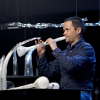 "
data-original-title="" title="">Terje Isungset, best known for his ice music enterprises. Their completely improvised performance went for making space and sonic beauty interact in intriguing ways, employing sounds of various trumpets, flutes, stones, skins, wood, metal, glass and human voice.
"
data-original-title="" title="">Terje Isungset, best known for his ice music enterprises. Their completely improvised performance went for making space and sonic beauty interact in intriguing ways, employing sounds of various trumpets, flutes, stones, skins, wood, metal, glass and human voice. It was a way of sound-making that allowed sounds to fit into space and—by the ears of the audience—find its own consonance and concordance, at some moments dense and intensified musically by projective melodic elements and vocalizations. Henriksen and Isungset had the courage, power and confidence to also be open and receptive, during that process, to the vibrations and impulses from the audience. Henriksen immediately connected to the cry of a young child in the audience and transformed it into musical waves. It almost inevitably ended in the audience's collective percussive participation, incited and cheered on by Henriksen blowing two trumpets simultaneously. These were 30 rich minutes spent in a maximal musical and experiential way.
The finishing act was the phenomenal saxophonist

Marius Neset
saxophoneb.1985

Magnus Hjorth
piano "
data-original-title="" title="">Graig Earle and English drummer
"
data-original-title="" title="">Graig Earle and English drummer 
Joshua Blackmore
drumsb.1986
 "
data-original-title="" title="">Troyka, with
"
data-original-title="" title="">Troyka, with 
Chris Montague
guitar, electric
Kit Downes
keyboardsb.1986
At the top of the mountain, the energy and sun shone brightly—a wonderful invitation to take the long walk along the winding path down the mountain into town to make it to the final gathering at Kalleklev's garden. No music: only fresh air, sun(set) and good food.
Back to the Sardines Factory
Renowned trumpeter

Nils Petter Molvaer
trumpetb.1960

Stian Westerhus
guitar
Ry Cooder
guitarb.1947

Erland Dahlen
drumsb.1971
The second night had the two Stians—the hyperactive musical genius Carstensen and the dark, rough outer lands man Westerhus, with his hidden delicate melodies and meteoric guitar. Carstensen, as usual, pulled out all his instruments, styles and modalities, including his skills as standup comedian, to fully entertain his audience; but despite of his first class lineup (amongst others, violists

Ola Kvernberg
violinb.1981
Westerhus premiered his new configuration Pale Horses with keyboardist ?ystein Moen and drummer

Erland Dahlen
drumsb.1971
Torbj?rn Zetterberg and Den Storan Fr?gan (The Big Question) is one of the most enjoyable groups around at this moment. A sextet comprised of four great horn players—trumpeter

Susana Santos Silva
trumpetb.1979
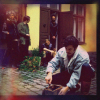
Christopher Cantillo
percussionSunday, the fourth night, presented pianist
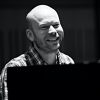
Christian Wallumrod
pianob.1971

Sylvie Courvoisier
piano
Mark Feldman
violinThe Wallumr?d Ensemble was the only group so far that played totally acoustically. Even percussionist

Per Oddvar Johansen
drums
Espen Reinertsen
clarinet, bass
Eivind Lønning
trumpetb.1983
Wallumr?d focused on the rediscovery and regaining of the enormous richness and dynamics of a pure acoustic sound. He achieved this by repeating small motifs—not monotonously, but by a sophisticated distribution of sound and silence. The articulation of the instruments was mostly open and pretty quiet. By repetition and sustain the perceived impact and loudness of the sound increased steadily, creating a special experience of sound intensity. The ensemble, in its present lineup—which played its last concert with Larsen at Nattjazz—has reached a high level of sophistication in the execution of its acoustic concept, revealed in a fascinating way during this Bergen performance and triggering a striking encore. It became clear that the Norwegian audience was highly receptive to the hidden and broken elements from folk, baroque and soul music. Only time will show how the ensemble will treat the open space caused by Larsen's departure.
Courvoisier and Feldman, who have a new live duo album out as well as Birdies For Lulu—a quite surprising album from a new quartet with bassist

Scott Colley
bassb.1963

Billy Mintz
drums
Alice Coltrane
piano1937 - 2007

John Zorn
saxophone, altob.1953
The motifs/themes of Courvoisier/Feldman were often splinters and fragments which did not succeed in a linear way but nonetheless fit together by way of forming contexts for each other and thereby yielding astonishing valences. These elements could also clash and cause lightning and thunder, highly imaginative effects due to the clarity of the nuclei or motifs they employed, even as Wallumr?d's musical sources were transfigured and encapsulated to yield new valences and contexts and echoes. The differences were clear in the duo's sharp, glistening and subtly singing rendition of Zorn's "Shadim." Just the contrasting clearness in both approaches made it a great concert experience due to prudent programming.
Photo Credit
Henning Bolte
Tags
Live Reviews
Henning Bolte
Norway
Bergen
Steinar Raknes
Tom Waits
Bushman's Revenge
Paolo Vinaccia
Kristoffer Berre Alberts
Ola H?yer
Gard Nilssen
Ornette Coleman
Albert Ayler
In the Country
Morten Qvenild
Terje Rypdal
Torbj?rn Zetterberg
Arild Andersen
Eva Bjerga Haugen
Inge Weatherhead Breistein
Stein Inge Br?khus
Hakon Kornstad
Rob Mazurek
Claude Thornhill
Enrico Rava
Miles Davis
Paul Motian
Han Bennink
Uri Caine
Sidney Bechet
Sigbj?rn Apeland
Per Zanussi
?vind Skarb?
Roger Arntzen
Ivar Grydeland
Huntsville
Trondheim Jazz Orchestra
Eric Dolphy
Morton Feldman
John Lurie
Paal Nilssen-Love
Mats Eilertsen
Ingebrigt Haker Flaten
Sidsel Endresen
Arve Henriksen
Marilyn Mazur
Eivind Aarset
Jan Bang
Terje Isungset
marius neset
Magnus Hjorth
Graig Earle
Joshua Blackmore
Troyka
Chris Montague
Kit Downes
Nils Petter Molv?r
Stian Westerhus
Ry Cooder
Erland Dahlen
Ola Kvernberg
Susana Santos Silva
Mats ?leklint
Christopher Cantillo
Christian Wallumr?d
Sylvie Courvoisier
Mark Feldman
Per Oddvar Johansen
Espen Reinertsen
Eivind L?nning
Tove T?rngren
Gjermund Larsen
Scott Colley
Billy Mintz
Alice Coltrane
john zorn
Comments
PREVIOUS / NEXT
Support All About Jazz
 All About Jazz has been a pillar of jazz since 1995, championing it as an art form and, more importantly, supporting the musicians who make it. Our enduring commitment has made "AAJ" one of the most culturally important websites of its kind, read by hundreds of thousands of fans, musicians and industry figures every month.
All About Jazz has been a pillar of jazz since 1995, championing it as an art form and, more importantly, supporting the musicians who make it. Our enduring commitment has made "AAJ" one of the most culturally important websites of its kind, read by hundreds of thousands of fans, musicians and industry figures every month.
Go Ad Free!
To maintain our platform while developing new means to foster jazz discovery and connectivity, we need your help. You can become a sustaining member for as little as $20 and in return, we'll immediately hide those pesky ads plus provide access to future articles for a full year. This winning combination vastly improves your AAJ experience and allow us to vigorously build on the pioneering work we first started in 1995. So enjoy an ad-free AAJ experience and help us remain a positive beacon for jazz by making a donation today.
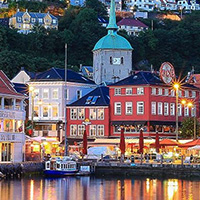
Bergen
Concert Guide | Venue Guide | Local Businesses
| More...




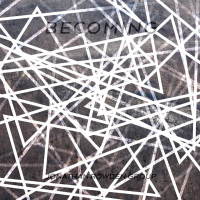
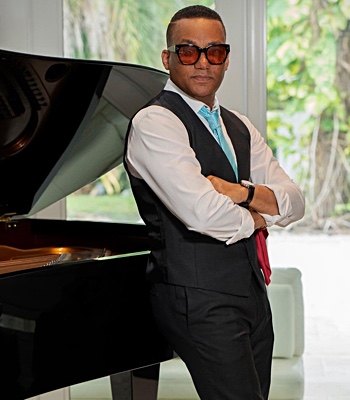
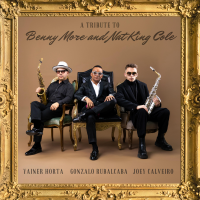 Buy Now
Buy Now
